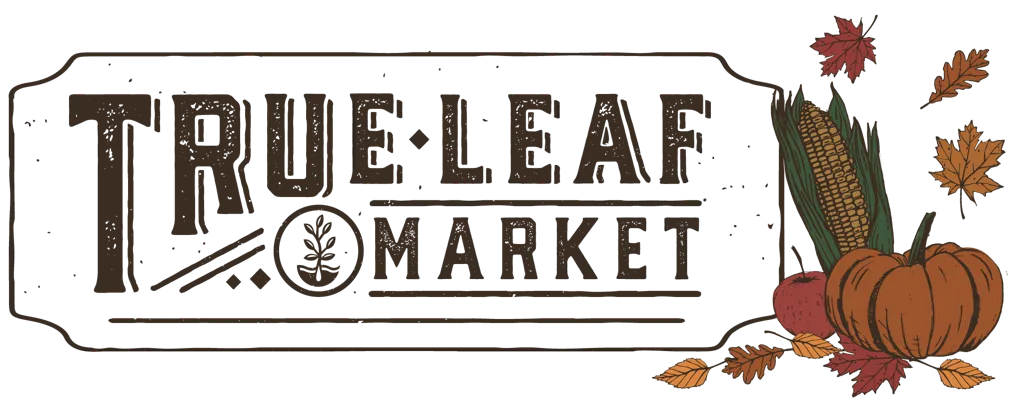Download Free Vegetable Growing Guide PDF
Growing Scarlet Runner Beans in the Vegetable Garden
Get a soil test before the planting season starts. This information can act as an accurate baseline to know what amendments need to be added and which should be avoided. Amend the soil with high-quality compost before planting. For optimal growth, plant seeds 1 inch deep directly into the garden soil after the danger of frost has passed and the soil has warmed to at least 60 F. Space the seeds 4 to 6 inches apart within rows, and maintain 24 to 36 inches between rows to ensure adequate air circulation and ease of access. Installing support structures at the time of planting is essential or else the plant’s vines will sprawl on the ground and will produce fewer, lower quality pods.
Consistent watering is crucial, especially during flowering and pod development. Aim to keep the soil evenly moist but avoid waterlogging, which can lead to root diseases. Mulching around the base of the plants helps retain soil moisture and suppress weeds. Since beans fix nitrogen in the soil, they generally do not require heavy fertilization.
Scarlet Runner Beans grow well with corn, which can also provide natural support for the climbing vines. Other companions include cucumbers, squash, and radishes. Avoid planting near alliums (onions, garlic), as they can inhibit growth.
Harvesting Scarlet Runner Beans
For fresh eating, harvest the pods when they’re young and tender, usually 50–75 days after planting. Pods have a rich, delicious flavor, and should be picked when fairly short, between four and six inches, and used as snap beans. Once the pods become too tough for snap bean use, the immature seed can be shelled out, or allowed to mature and dry. The pods typically take 90-100 days to reach this stage. Dried runner bean seed can be cooked like dried common bean seed.
About Scarlet Runner Bean Garden Seeds
The stunning scarlet-red flowers not only make your garden more beautiful but also attract pollinators like hummingbirds.
Rich in protein, fiber, and essential minerals, Scarlet Runner Beans are a nutritious addition to any meal. They’re also a good source of antioxidants.
Gardeners often choose pole beans over bush beans for one of two reasons: they want to save space by allowing them to climb vertically, or they want to harvest the beans more easily without bending or kneeling. The only downside is you need to provide a trellis or some type of structure for them to grow up.
These beans can be eaten in multiple ways—fresh, shelled, or dried. Young pods are tender and can be used like green beans, while the mature seeds are great in soups or stews.
Tips From Our Gardeners
"Scarlet Runner Beans are a great choice for gardeners looking for a productive and attractive plant. They offer a long harvest window, from fresh beans in the summer to dried beans in the fall.”
 |
- Lara Wadsworth, True Leaf Market Writer
|
Other Resources
Scarlet Runner Bean Seeds Per Package:
- 15 g - Wholesale - Approximately 15 Seeds
- 4 oz - Bulk Seeds - Approximately 120 Seeds
- 1 lb - Bulk Seeds - Approximately 480 Seeds
- 5 lb - Bulk Seeds - Approximately 2,400 Seeds
- 25 lb - Bulk Seeds - Approximately 12,000 Seeds
Non-GMO Scarlet Runner Bean seeds are available for Fast Free Shipping on qualifying orders.
=======
ATTRIBUTES
Basic Info
| Latin Name: |
Phaseolus coccineus
|
| Bean Sub-Type: |
Not Applicable. |
| Scarlet Runner Bean Color: |
Green |
| Scarlet Runner Bean Flavor: |
Tender and sweet. |
Growing Info
| Hardiness Zone: |
3, 4, 5, 6, 7, 8, 9, 10, 11 Annual Crop: Not Intended to Overwinter |
| Days to Maturity: |
50-75 |
| Days to Germination: |
5-10 |
| Seeding Depth: |
1 inch |
| Plant Spacing: |
4-6 inches |
| Row Spacing: |
24-36 inches |
| Plant Height: |
60-96 inches |
| Growth Habit: |
Vining |
| Soil Preference: |
Beans prefer well-draining, nutrient-rich, loamy soil with a pH of 6.0-6.8. As light feeders and nitrogen-fixing legumes, beans do not require nitrogen-heavy fertilizers. |
| Temperature Preference: |
Warmer (70-85 F). |
| Light Preference: |
Full Sun |
Other
| Direct Sow: |
Yes, direct sow when soil temperatures are reliably above 60 F. Planting with an inoculant may increase yields, but is certainly not required for a successful grow. |
| Start Indoors: |
Not Recommended. Beans grow best without any root disturbance. We recommend direct sowing instead of transplanting. |
| Bean Pollination: |
Beans are self-pollinating as they contain both the male and female parts within their flowers, unlike other fruit and vegetable plants. While they are self-pollinating, having a variety of pollinators and flowers around will improve yields by ensuring the greatest chances for pollinating events to occur. |
| Snap or Shell Bean: |
Snap - Snap beans have a fleshy edible pod. Snap beans are also commonly referred to as string beans or green beans (though not all snap beans are green). They are called snap beans because they make a snapping sound when you break them in half. |
| Pole or Bush Bean: |
Pole - Pole beans are vining-type plants that put out runners that grow very long or tall. Pole beans are so-called because they require a trellis, support, or wait for it… a pole. Pole beans require more effort than bush beans, but may also be grown in containers with the right support. |
| Plant Width: |
18 inches |
| Growth Speed: |
Mid - Ready for harvest around 66-86 days. |
| Deer Resistant: |
No |
| Germination Temperature: |
70-90 F |
| Pests and Diseases: |
Beans are susceptible to beetles, aphids, spider mites, and cutworms. Look for signs of chewing, curling leaves, eggs on the undersides of leaves, and leaf discoloration. Keeping your bean plants clean from dust build-up and surrounded by a variety of plants to help deter and prevent pest damage. Beans are also susceptible to powdery mildew, bean blight, rust, and root rot. Maintain a regular watering schedule that avoids overly saturated soil. The roots need adequate time to air out between watering. This will also help prevent common fungal and bacterial diseases from developing. Good air circulation and applying water to the ground rather than the leaves will help maintain healthy bean plant growth. |
| Garden Size: |
Greenhouse, Garden Plot, Raised Bed, Container |
| Bean Use: |
Fresh eating, canning, freezing, and cooking. |
| Climate Tolerance: |
Drought |




















